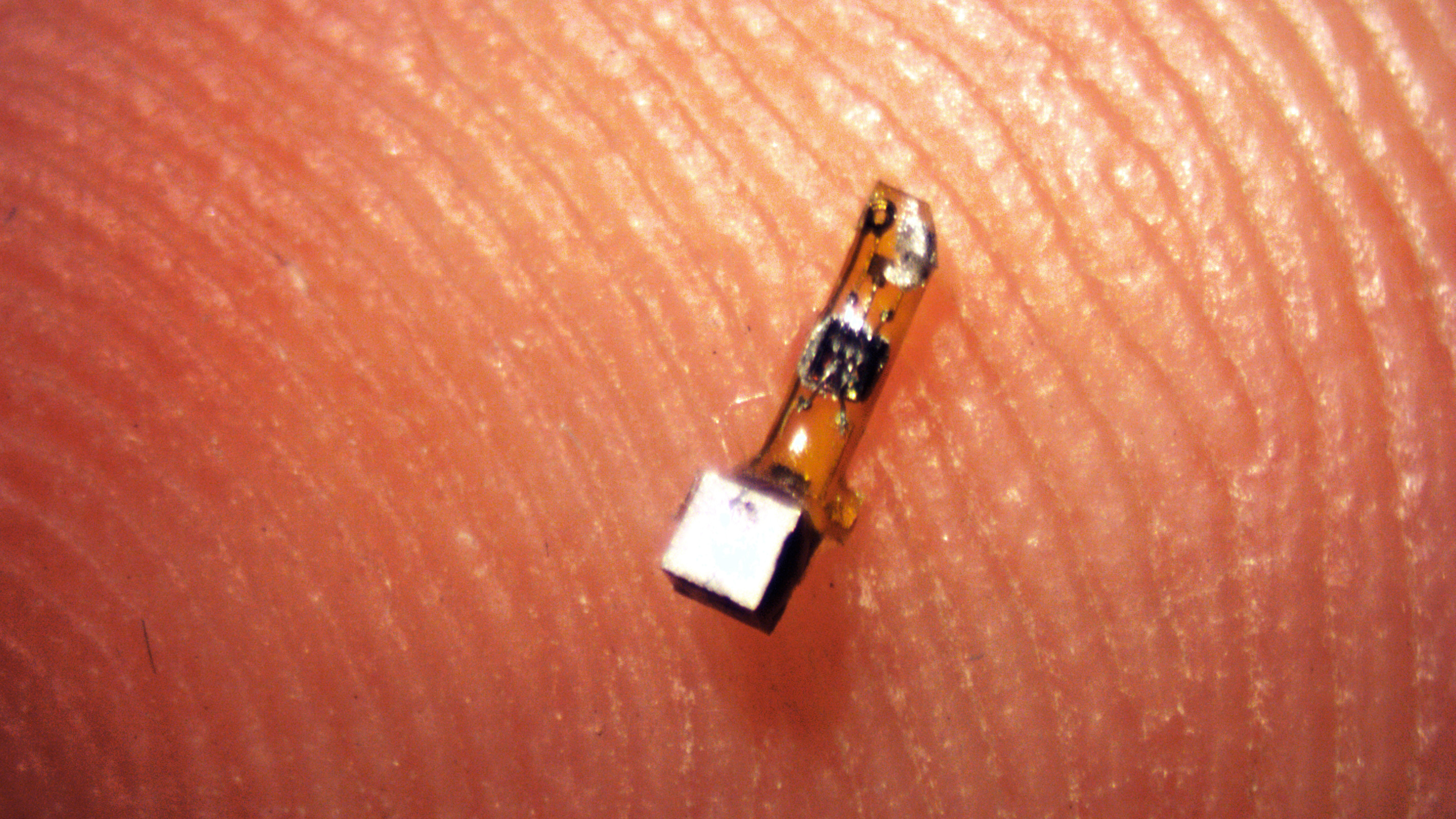These dust-sized sensors can be implanted within your body
Paving the way for 'electroceuticals'

In the future, our bodies will be full of tiny sensors continually monitoring our nerves, muscles and internal organs.
That's what a team of engineers from the University of California, Berkeley, believes - and they've just built the first prototype.
Each speck of their "neural dust" is just three millimetres long, with a 1x1mm cross-section. They've coated version one of the device in surgical-grade epoxy resin, but the team believes that biocompatible thin films could allow them to create a version that could last in the body without degradation for a decade or more.
Each sensor contains a piezoelectric crystal, as well as a pair of electrodes. The crystal means that the device doesn't need a battery - pulses of ultrasound will both power it and allow it to transmit its data - the voltage across the electrodes.
The team has already tested the device on rats, implanting the sensors in the muscles and peripheral nerves of the animals. To read the data, the rats were given little backpacks containing the ultrasound transceiver, which also logged the information.
The results of those experiments have just been published in a paper in the journal Neuron. But the team is aiming for more than just snazzy rodent rucksacks - they want to create an Internet of You.
Minimally Invasive
"The vision is to implant these neural dust motes anywhere in the body, and have a patch over the implanted site send ultrasonic waves to wake up and receive necessary information from the motes for the desired therapy you want," says Dongjin Seo, lead author on the Neuron paper.
Get daily insight, inspiration and deals in your inbox
Sign up for breaking news, reviews, opinion, top tech deals, and more.
"Eventually you would use multiple implants and one patch that would ping each implant individually, or all simultaneously."
The idea is that the data could be used to monitor different parts of the body, treating disorders like epilepsy or stimulating the immune system with so-called 'electroceuticals'.
Jose Carmena, who also contributed to the paper, added: "Now that you have a reliable, minimally invasive neural pickup in your body, the technology could become the driver for a whole gamut of applications, things that today don't even exist."
- Duncan Geere is TechRadar's science writer. Every day he finds the most interesting science news and explains why you should care. You can read more of his stories here, and you can find him on Twitter under the handle @duncangeere.
